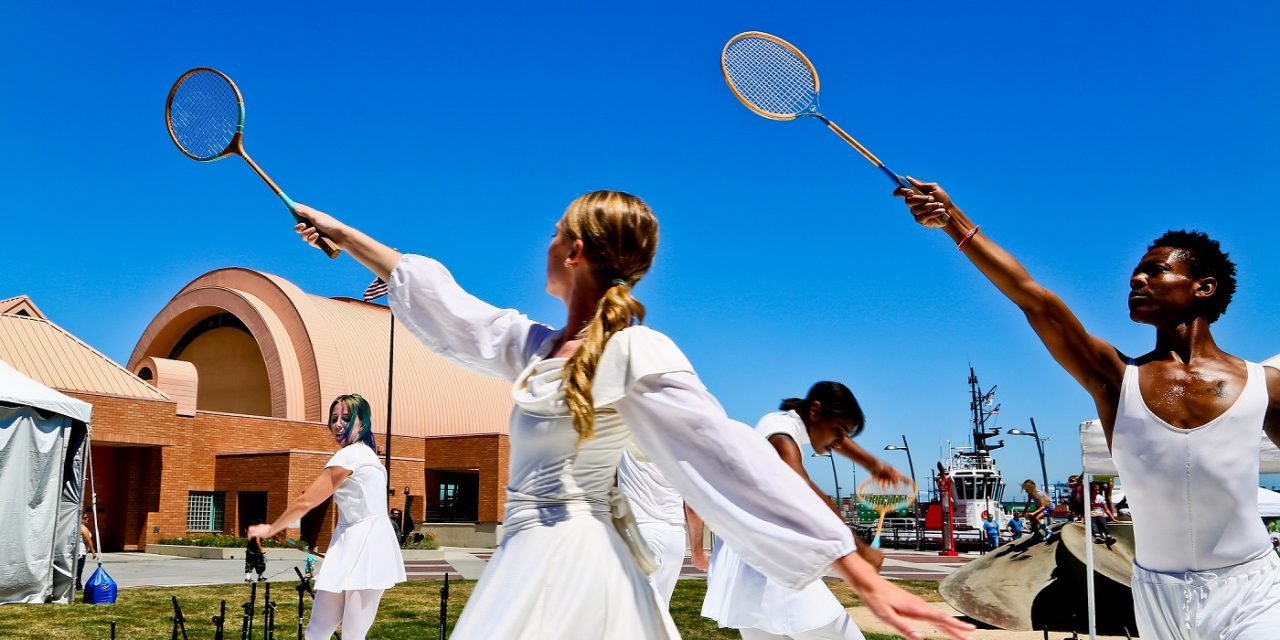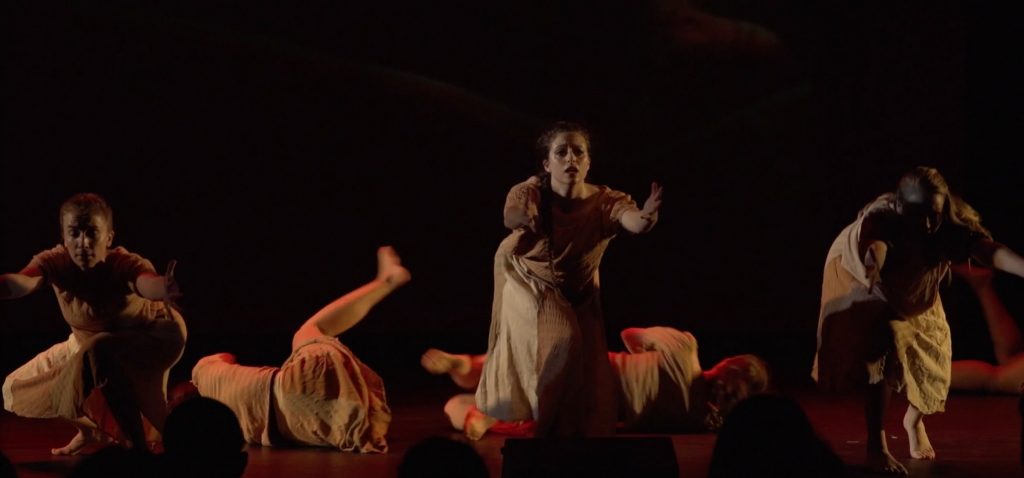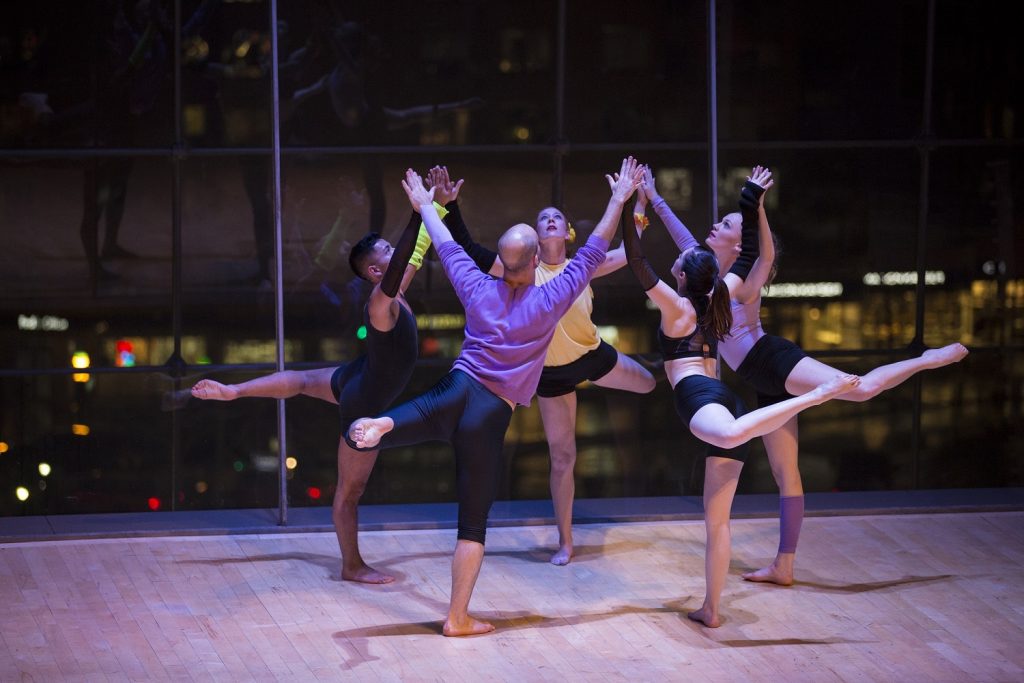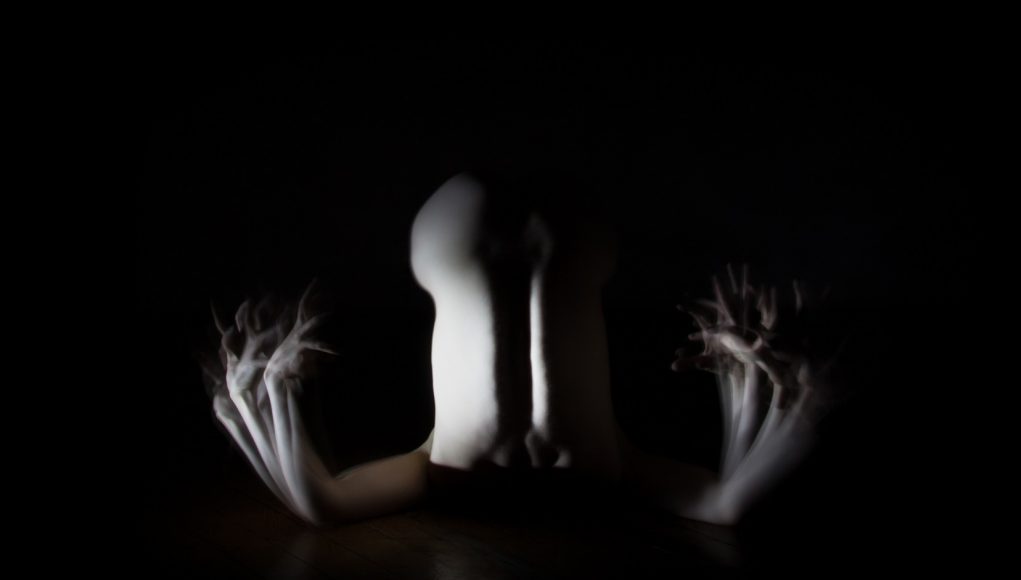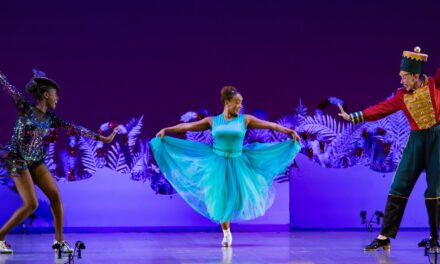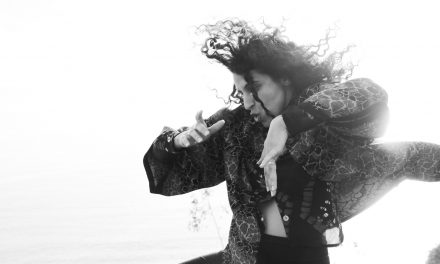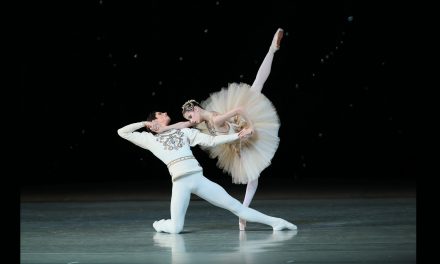Sitting just above Hollywood Blvd., where it converges with Sunset, is the historic Barnsdall Park. This hidden gem is the setting of Frank Lloyd Wright’s stunning Hollyhock House and the Gallery Theater where Los Angeles Choreographers & Dancers/Louise Reichlin & Dancers performed this past weekend.
At Barnsdall Park, it is possible, on a clear LA afternoon, to stand in just the right spot and see the iconic Hollywood sign over one shoulder and and the blue of the Pacific over the other. Ocean breezes cool the air and a sense of history and feeling of peace might permeate your soul.
This mood comes with you into the iconic theater, a quiet space that seats a perfect 300 people. A sense of history comes with Louise Reichlin. Her company was begun in 1979 with her husband and collaborator Alfred Desio and though he passed away in 2007 she has kept her company alive against the odds. Now at nearly 80 years old she is still at it, restaging past work and creating new and meaningful pieces.
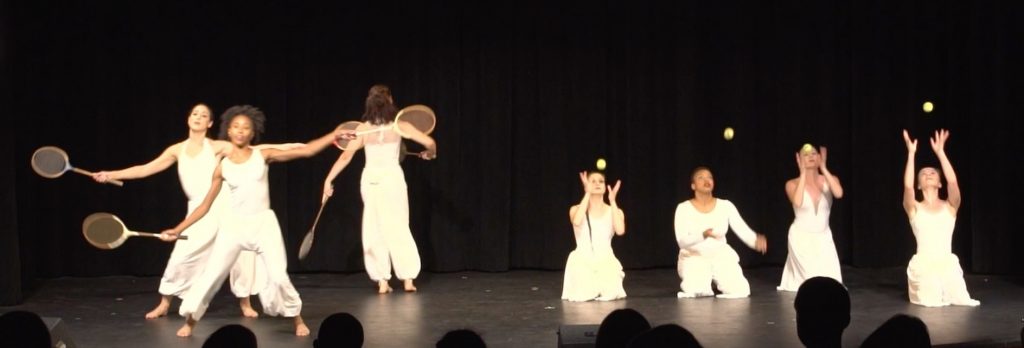
Los Angeles Choreographers & Dancers/Louise Reichlin & Dancers – “Tennis Dances” – Photo courtesy of the company.
“The Tennis Dances” which premiered in 1979 for USC Dance Theater was the first piece of the afternoon. Ten short dances connect thematically to create one cohesive piece. Each section has it’s own music and character. The company dancers are used equally throughout. They are, Challyce Brogdon, Jill Elaine Collins, Corrina Gemignani, Coree McKee Gonzalez, Danny Guerro, Dominique Kersch, Kensiwe Mathebula, Eve Metsaranta, Dion M. Pratt and Louise Reichlin in a cameo. The simple white costumes by Louise Reichlin give a sense of the long days of summer.
What Reichlin is able to do is create a mood. She can tell a story and has a sense of humor about her work. Technically her dancers are limited. They work hard and sincerely and ultimately do an acceptable job but smartly, Reichlin has kept the choreography simple. So, for the most part it is possible to enjoy the show and not worry too much for the dancers.
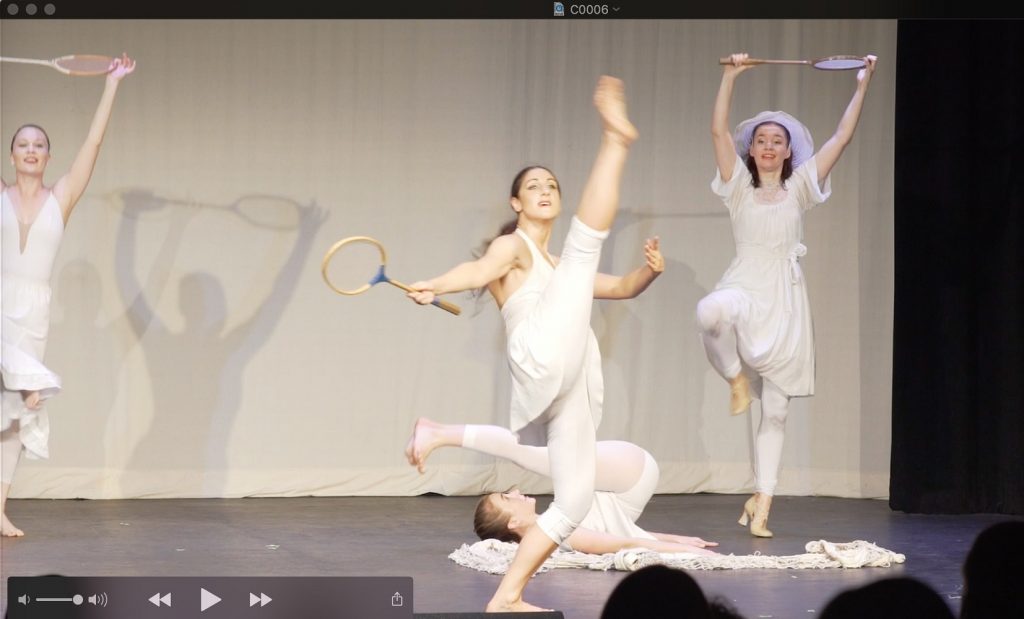
Los Angeles Choreographers & Dancers/Louise Reichlin & Dancers – “Tennis Dances” – Photo courtesy of the company.
The opening segment “Sanctus” with African world music by David Fanshawe was a weak beginning. Each dancer enters with tennis rackets held aloft and until much later in the piece they are strictly used as props, not as rackets. The music is a mix of operatic choral singing, African drums and atonal sounds, which, Reichlin has staged, in stylized movement with an East Indian emphasis. Perhaps the early works of Bronislava Nijinska or even Graham has influenced her. Though not difficult the dancers struggled with balance and line making less of the work than it might be. However, Reichlin has the ability to keep the stage moving with interesting patterns.
From this point things improve and several segments were quite delightful. In “Ives,” music by American composer Charles Ives, three women do simple steps and poses to a nostalgic and emotive piano piece that has its effect.
The “Happy Duet’” music by Stravinsky is short and truly sweet and “Quintet” music by Milhaud, reminds you of a sunny afternoon in the park. Both are simple charming and evocative of a perceived, more innocent time.
“Double Racket Solo,” music by Hausmann and danced by Kensiwe Mathebula is a silly bit of business with a musical theater bent. Less successful is “Harem” with music by Sarkisian. This take on Belly Dancing with snaky hips and twisting arms might remind you of Cleopatra and the Asp but seems obvious and becomes repetitive.
In silence Kensiwe Mathebula finds a robe onstage. She puts it on and so begins “Ritual.” The music by Carl Orff creates a solid wall of choral sound. The dancers follow simple moves seemingly at Mathebula’s behest to no particular conclusion. Again, with rudimentary “Grahamesque” choreography it is the simple patterns and pictures that Reichlin composes that create interest. She has a grasp on this but actual steps could be more creative and involved. Then again her dancers may not be up to the task.
“Violent Duet” is the first reference to an actual tennis match. A male dancer rides onstage on the back of Dion M. Pratt and they fall into a competitive free for all. The ideas have potential but the lifts and fighting are messy and poorly executed. This leads to the match with spectators and a net, and the action of the game is fun to watch as it becomes more and more aggressive. Music here by Mayazumi, Gassman and Sala is an atonal soundscape. Concluding the tennis match is what appears to be a simplistic ode to Agnes DeMille and Rodeo with its western flair and traditional music. It seems to imply that the conflict of the match is over so let fun preside. The music is again by Haussmann with traditional bluegrass arranged by Sprung.
A repeat of the opening is also the conclusion. Unfortunately in the final moments of the dance each performer exits and they do not return for a bow leaving the audience in the lurch. The small gathering did not know what to do so a smattering of applause echoed feebly in the theater.
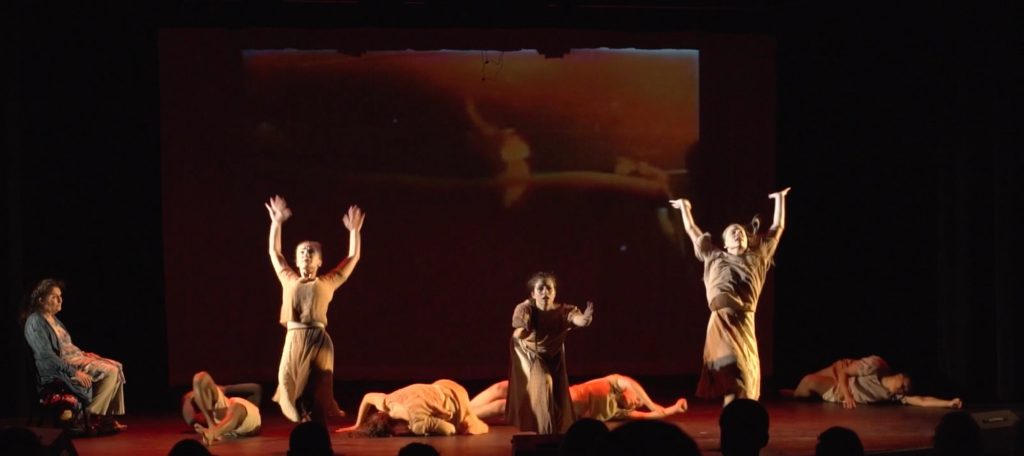
Los Angeles Choreographers & Dancers/Louise Reichlin & Dancers – “A Child’s Jewish Story” – Photo courtesy of the company.
After a short break Louise Reichlin took the stage to introduce her new work, “A Jewish Child’s Story Part I” – Roses on my Wallpaper – A Dream. Reichlin speaks to the audience telling her remembrances of being caught in a dream as a child and wavering on the precipice of sleep and wakefulness. Within this dream characters from children’s stories come to her. Some represent her Jewish culture and some are the super heroes of folklore. This is the platform on which the dance is built. The music is by Luvi Torres and Michelle Green Willner along with Traditional Turkish songs. This work feels and looks like children’s theater. Again the choreography is simple, meandering and not always effective. Still, Reichlin builds a mood and some lovely pictures as when she creates a Maypole from a dancer’s skirt. Unfortunately at this performance the “Magician” was out of the show due to an injury so this segment was shown on video projected onto the white backdrop. With technical difficulties and grainy footage it was hard to get the feel of what appeared to be a clever but slow moving sequence. Each character has a moment but the narrative can be hard to follow. With a little editing and more focus this might be a wonderful piece for any Children’s Theater.
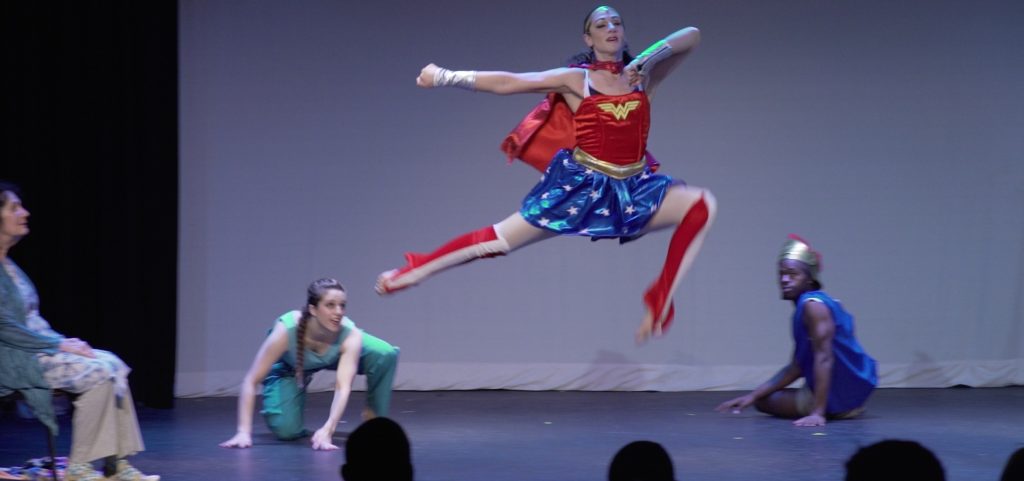
Los Angeles Choreographers & Dancers/Louise Reichlin & Dancers – “A Child’s Jewish Story” – Photo courtesy of the company.
The final act of the event was “A Jewish Child’s Story, Part II” – Yellow Star. Elsewhere I saw this referred to as “Invasion” which is more descriptive. Again narrated by Reichlin this touches on the story of her family, Polish Jews, many who were lost in the holocaust. The dance is a mix of traditional Jewish Horahs and simple contemporary movement with music by The Klezmer Conservatory Band. Dancing in continuous circles the dancers lay out a symbolic yellow star with strips of cloth on the floor, quickly complimented by a blue star. Soon a foreboding feel interrupts the pleasant atmosphere of the circular dancing. As the star is pulled apart the dancers begin collapsing, reaching, running and despairing as the unthinkable enters their world. The ending is effective as all the dancers disappear leaving a faint Louise Reichlin to dance in the silence. Until, one by one they move past her, a fleeting memory of long ago.
There is video enhancement by Michael Mascucci and Andrew Zutta and costumes by Linda Borough and Diana MacNeil. The magician costume by Borough is a standout. The narration by Reichlin is not always clear.
Louise Reichlin is a conundrum. Her choreography is simple even rudimentary and her dancers need more strength and technique but her storytelling ability, patterns and staging are engaging. Her musical choices are unique and her ideas are intriguing. All of which lead to enjoyable watching and moments of enchantment. There is something here, which could be even more.
Reichlin is also to be commended for her ongoing work with arts and education programs throughout Los Angeles.
Written by Tam Warner for LA Dance Chronicle, October 23, 2019.
To visit the Los Angeles Choreographers & Dancers/Louise Reichlin & Dancers website, click here.
Featured image: Los Angeles Choreographers & Dancers/Louise Reichlin & Dancers – “Tennis Dances” – Photo by Taso Papadakis

